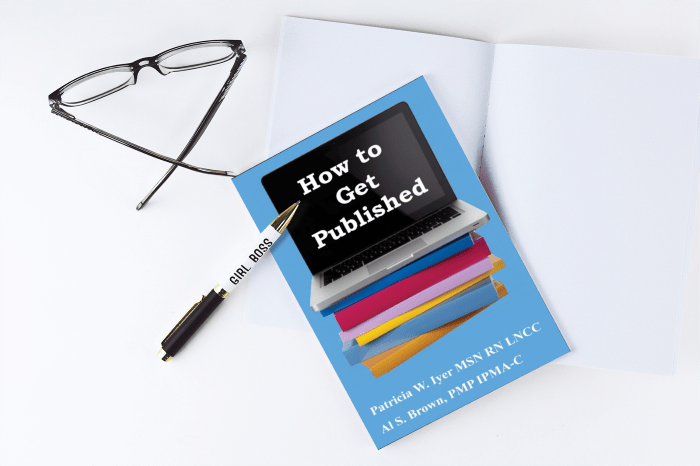 You have a wealth of knowledge that you want to share in a new way – through the publishing a book. You may have a body of work ready to repurpose (such as a blog you’ve maintained for several years) or a ghostwriter at the ready. Or you just really like to write; you find that writing the book comes easy.
You have a wealth of knowledge that you want to share in a new way – through the publishing a book. You may have a body of work ready to repurpose (such as a blog you’ve maintained for several years) or a ghostwriter at the ready. Or you just really like to write; you find that writing the book comes easy.
How do you share your book? How can you get your book published? There used to be only one option: a traditional publisher. Now you have several choices.
PDF Ebook
Open your Word document and choose “PDF.” Then you can sell the resulting file on your own website, or upload it to a number of other ebook marketplaces online.
However, often you want a higher profile product. Ebooks don’t have the authority that printed books carry. But this can be a viable option to get you off the ground. It’s also a great way to share your book with people who will write reviews for you before you publish your book. Advance readers will give you those all-important testimonials.
Kindle
Amazon’s Kindle marketplace makes it easy for publishing a book. In fact, with just a few minutes of formatting, and another several minutes spent on their step-by-step uploading system, you can have your book on their virtual shelves in less than an hour. You can also readily find people with experience in formatting a book for Kindle. Check out a site I use, http://upwork.com, where you can hire people for a project like this.
With its incredible popularity and the ability to offer “free days” during which anyone can download your book at no cost, Kindle is a great way to build a buzz quickly.
Print on Demand
Print on demand means just that. Someone orders your book and it is printed in response to that order. Print on demand is a more economical model than vanity presses which require you to pay for hundreds if not thousands of copies up front, leaving you with a room full of books to sell on your own.
Kindle Direct Publishing is the giant in this industry. A few years back it combined with CreateSpace so that all of Amazon’s publishing options are now under one umbrella.
As part of Amazon, KDP makes it easy for you (or your graphic artist hired through Upwork) to load a book and its cover. I recommend you hire someone to do this. It is not hard, but there are steps best tackled by someone who understands the process.
Buyers order your book from sellers such as Amazon and the book is printed and shipped the next day. This makes it easy and cost-effective for everyone to become a published author. But not all self-published books are well-written. Invest in an editor to polish your manuscript, to catch those embarrassing typos, and to help ensure that what you wrote is going to be clear to others.
 Traditional Publisher
Traditional Publisher
The options for self publishing have had a profound impact on traditional publishers. Their world has shrunk, and this affects you as an author if you are seeking a traditional publisher.
Publishers are bombarded with manuscripts and are very selective about the ones they take on. There are advantages to signing on with a traditional publisher. Getting your book published with a traditional print publisher will get you the most audience and press. The publisher may hire a publicist to get you on radio interviews, for example.
But it is extremely difficult to get a traditional publishing house to take on a new author. An agent can be effective in getting the attention of a publisher. Your name, your brand, your platform (the ability to attract buyers) are crucial and may be even more important to the publisher than your content.
If you do manage to get a publisher, your royalties (the amount you earn from your book) will be very small—maybe as little as 8% of the net price. The publisher may ask you to purchase a specific number of copies of your book and will rely on you to help promote it.
Indie Publishers
These publishers vary from the pattern of traditional publishers in the sense that they may expect you to make a substantial financial contribution to underwrite some of the costs of publishing a book. The publisher spreads the risk to you, knowing the sad truth that the majority of books don’t sell well.
Be sure to thoroughly read a publishing agreement so you understand the terms of a traditional or indie publisher, if you decide to take this option. I recommend having an attorney familiar with publishing contracts give you some guidance.
The important thing is to get your book written, and then publish where you’re most comfortable. The rest will come naturally.
There are an unbelievable number of books languishing on hard drives because the author did not take action to release them to the world. Share all that knowledge you have learned through your experiences. There are people who need to know what you do so they can change their lives.
- There is an article or book trapped inside you that is aching to get written
- You are interested in developing or expanding your ability to write for publication.
- You are unsure how to get started as an author.
- The idea of writing seems so overwhelming that you do not know how to start.
- You are afraid of being embarrassed by misusing words.
- You are concerned with avoiding traps associated with being an author or editor.
If you liked this post, you’ll love How to Get Published.
 Pat Iyer is an editor, author, book coach and ghostwriter who helps individuals create books that encourages their expertise to shine and advances their businesses. She has written or edited 48 of her own books.
Pat Iyer is an editor, author, book coach and ghostwriter who helps individuals create books that encourages their expertise to shine and advances their businesses. She has written or edited 48 of her own books.


